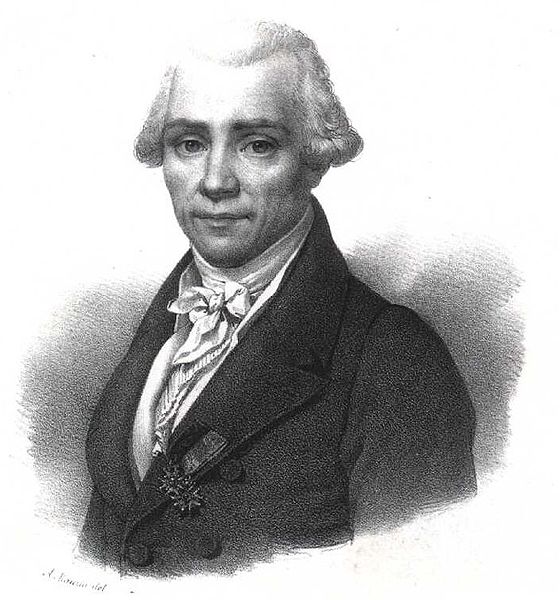<Back to Index>
- Chemist Louis Nicolas Vauquelin, 1763
- Writer Herbert Ernest Bates, 1905
- 1st President of the Gambia Dawda Kairaba Jawara, 1924
PAGE SPONSOR

Louis Nicolas Vauquelin (16 May 1763 - 14 November 1829), was a French pharmacist and chemist.
Vauquelin was born at Saint-André-d'Hébertot in Normandy, France. His first acquaintance with chemistry was gained as laboratory assistant to an apothecary in Rouen (1777 – 1779), and after various vicissitudes he obtained an introduction to A.F. Fourcroy, in whose laboratory he was an assistant from 1783 to 1791.
Moving
to Paris, he became a laboratory assistant at the Jardin du Roi and was
befriended by a professor of chemistry. In 1791 he was made a member of
the Academy of Sciences and from that time he helped to edit the journal Annales de Chimie (Chemical annals), although he left the country for a while during the height of the French Revolution. In 1798 Vauquelin discovered beryllium by extracting it from an emerald (a beryl variety) and reducing the beryllium chloride with potassium in a platinum crucible. At
first his work appeared as that of his master and patron, then in their
joint names; in 1790 he began to publish on his own, and between that
year and 1833 his name is associated with 376 papers. Most of these
were simple records of patient and laborious analytical operations, and
it is perhaps surprising that among all the substances he analysed he
only detected two new elements, beryllium in 1798 in beryl and chromium in 1797 in a red lead ore from Siberia. He also managed to get liquid ammonia at atmospheric pressure. Either
together or successively he held the offices of inspector of mines,
professor at the School of Mines and at the Polytechnic School, assayer
of gold and silver articles, professor of chemistry in the College de
France and at the Jardin des Plantes, member of the Council of Industry and Commerce, commissioner on the
pharmacy laws, and finally professor of chemistry to the Medical
Faculty, to which he succeeded on Fourcroy's death in 1809. His
lectures, which were supplemented with practical laboratory teaching,
were attended by many chemists who subsequently attained distinction. From 1809 he was professor at the University of Paris. In 1816, he was elected a foreign member of the Royal Swedish Academy of Sciences. He was elected to the Chamber of Deputies in 1828. In 1806, working with asparagus, he and Pierre Jean Robiquet (future discoverer of the famous red dye alizarin, then a young chemist and his assistant) isolated the amino acid asparagine, the first one to be discovered. He also discovered pectin and malic acid in apples, and isolated camphoric acid and quinic acid. His death occurred while he was on a visit to his birthplace. Among his best known works is "Manuel de l'essayeur" (Manual of the experimental). The plant genus Vauquelinia is named in his honor, as is the Vauquelin, an egg white foam associated with molecular gastronomy.